Planning a winter garden – expert planting and design tips
Start planning a winter garden so you can enjoy a backyard that is still full of interest, color and scent in the colder months
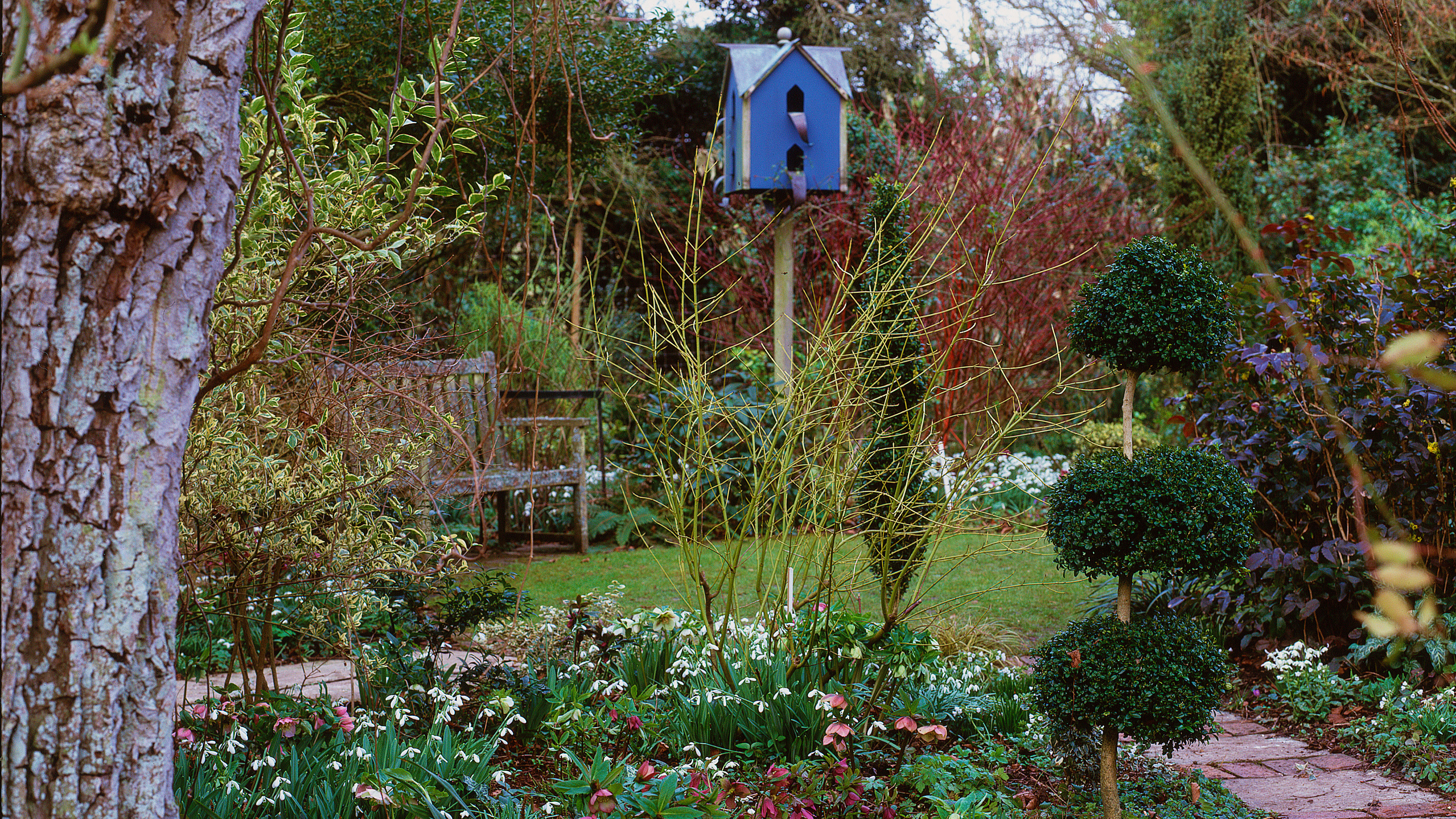

Leigh Clapp
Winter isn't thought of as a colorful time in the garden, but by planning a winter garden you will realize how much this season in fact has to offer.
There are still many ways to enjoy your backyard and plan for adding winter interest as part of your winter garden ideas.
There is great beauty of both color and scent to be enjoyed from a host of winter plants for pots and borders, albeit more subtle, at this time of year. Take time to admire the details nature has on offer: the structure of evergreen shrubs, architectural framework, parchment toned grasses, vibrant and colorful stems, beautiful barks, berries and scented winter flowers come to the fore.
In addition, you can allow some flowers in the border to fade gracefully and be appreciated for their ethereal, rusted seedheads; both a boon for wildlife and also quite magical when frosted.
Planning a winter garden
Not everything sleeps in the garden through the colder months, so start planning a winter garden to continue interest through to spring.
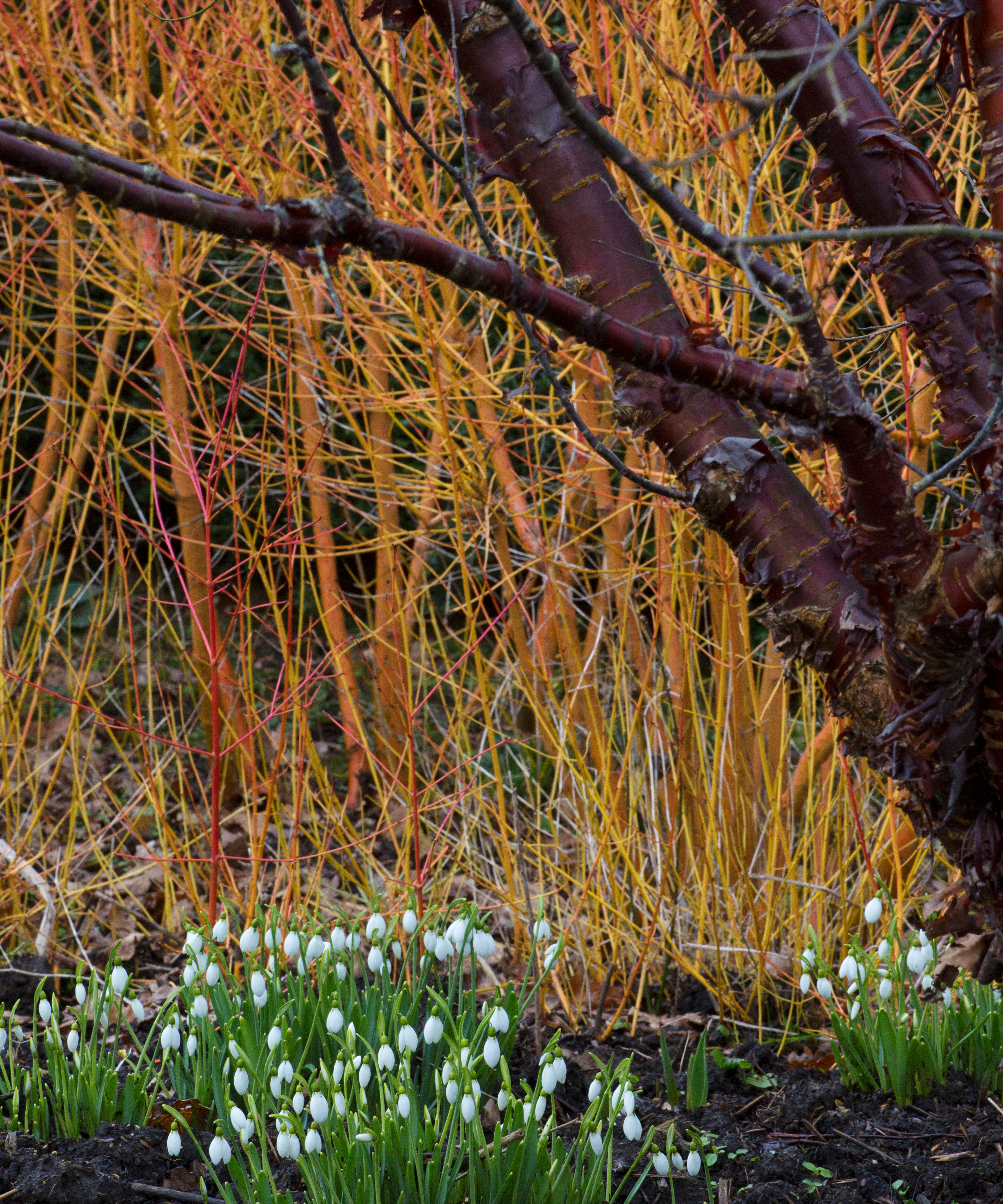
Winter planting ideas
Fall and early winter is a good time to plant fast growing trees and shrubs, including economical bare-root trees, while the soil is still warm and before the severe frosts arrive.
Whether you’d like to add a few winter interest plants to fill gaps in the border, or create a winter garden bed, visit one of the many winter gardens that have been created for inspiration when planning a winter garden.
Combinations of plants, such as fiery dogwoods, ornamental ghostly brambles, tactile trunks of silver birch and mahogany prunus, underplanted with low growing ornamental grasses and cyclamen look stunning, while fragrances from witch hazels which are excellent as shrubs for shade, honeysuckle and wintersweet invite closer inspection.
Maintenance in a winter garden
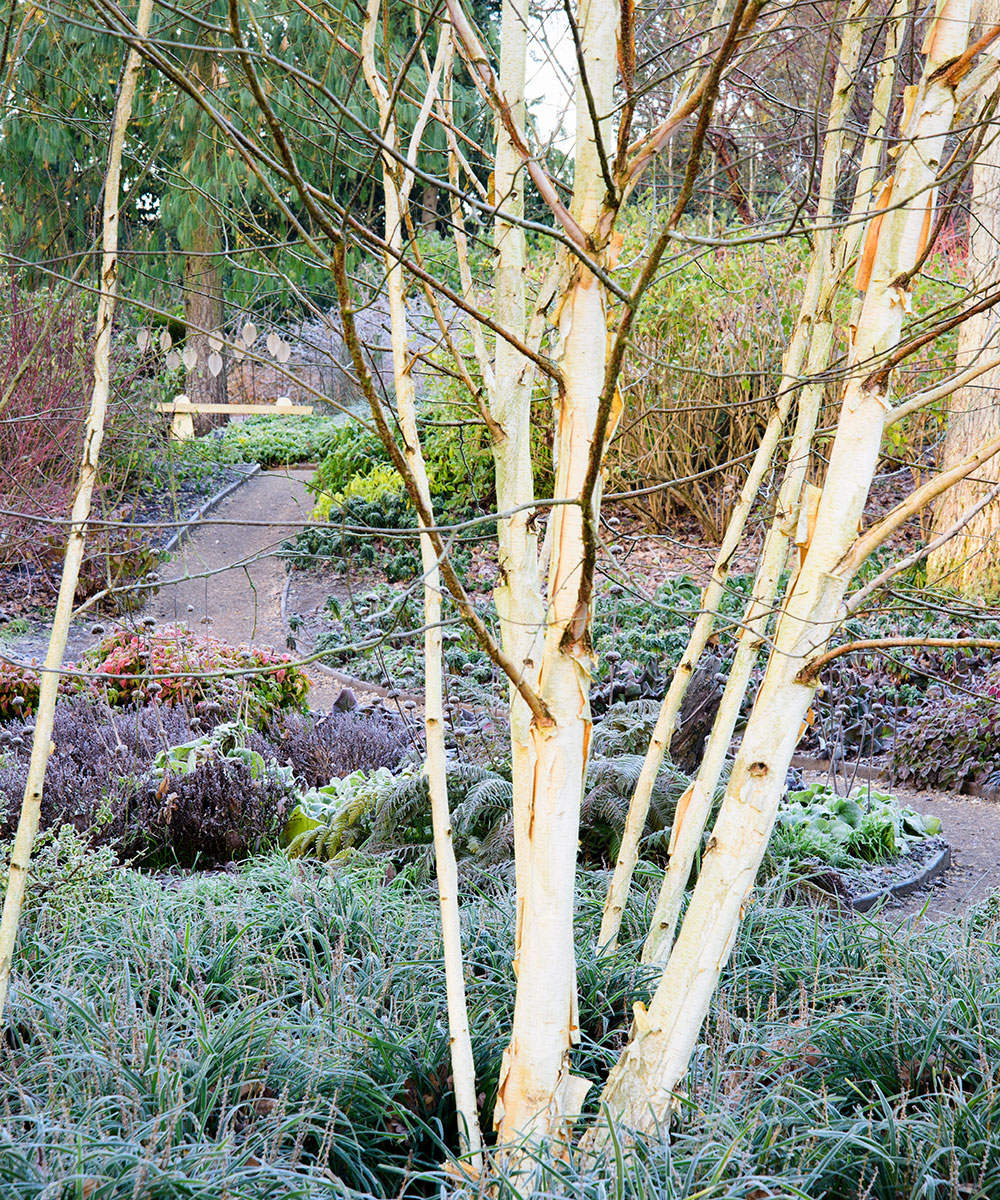
Planning a winter garden must take maintenance into consideration – and how much time you can devote to it.
'It’s surprisingly busy,' says Jonny Norton, head gardener at Mottisfont Abbey 'We prune the roses and some fruit trees, and clip the trees in our Lime Walk. The glasshouses are cleaned, ready for spring,' as part of planning a greenhouse.
Many seasonal plants won’t survive the winter weather, so be sure to read up ahead of the big chill to see what you can save and find out how to winterize hydrangeas and other plants and shrubs and how to protect plants from frost.
Find out how and when you need to dig up summer bulbs to save and store them for their next big break in the warmer climate. These bulbs need to be kept indoors in a dark, cool space like a garage or shed until spring.
Some summer plants can even be transferred and potted indoors for a DIY houseplant. If you're overwintering geraniums or begonias in pots, for instance, these can flourish inside in pretty pots – just make sure they’re placed in naturally well-lit areas of your home.
Trim and tidy
Remove fading and spent plants in beds and borders. Prune roses, shrubs and trees, as cutting unwanted growth while dormant reduces the risk of the wound bleeding, and in addition the structure is more visible.
Begin with cutting out diseased or dead branches and use a sloping cut just above a leaf mode, following the natural shape of the plant.
Overwinter delicate plants
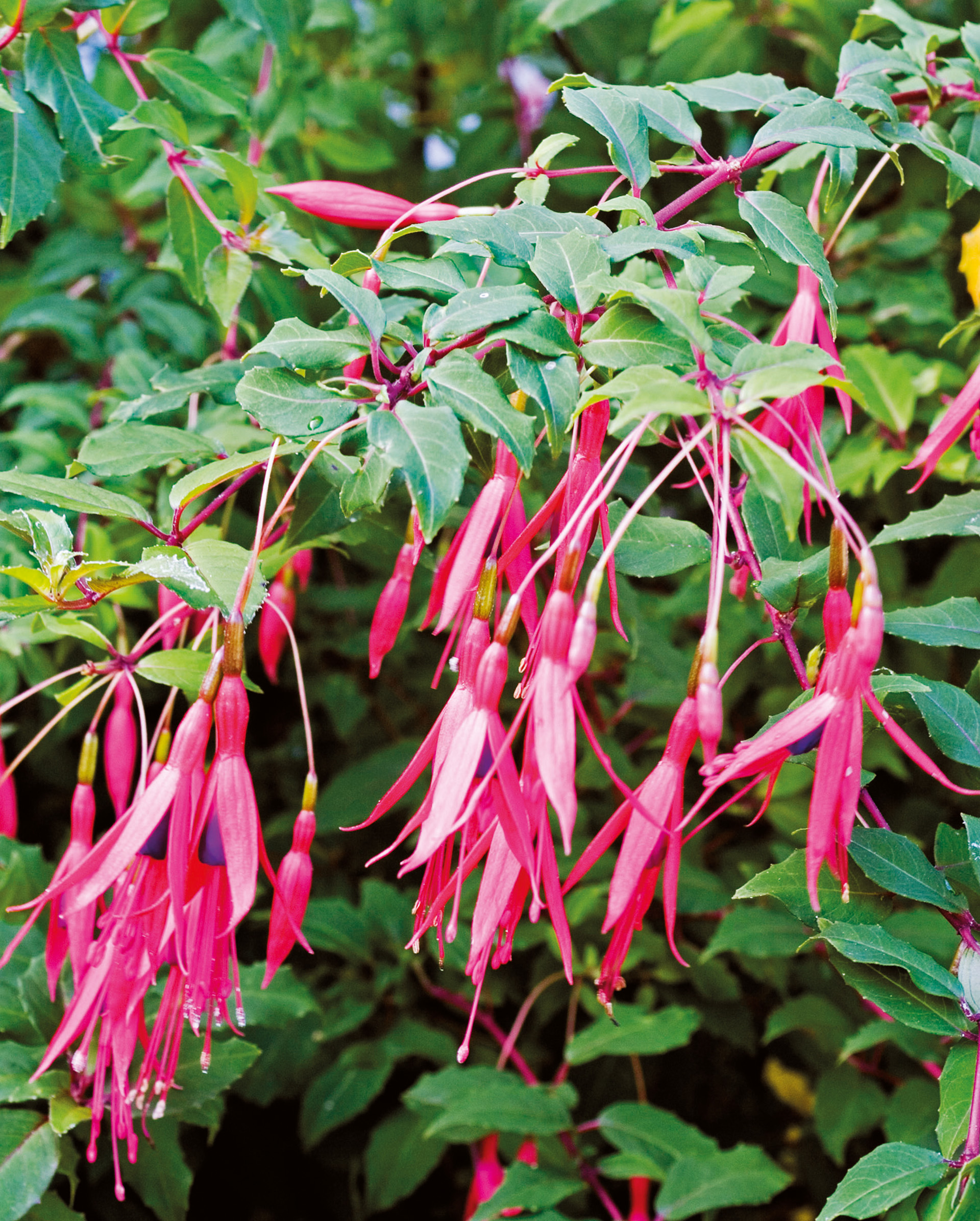
Part of the necessary maintenance of a winter garden, overwintering plants won't give you anything pretty to look at in a winter backyard, but will ensure your beloved, more delicate blooms will survive through to spring and into summer for an effortless show then.
Whether you need information on how to overwinter dahlias, or how to overwinter fuchsias (above), these are jobs to do before the first frosts.
Provide a backdrop framework of evergreens
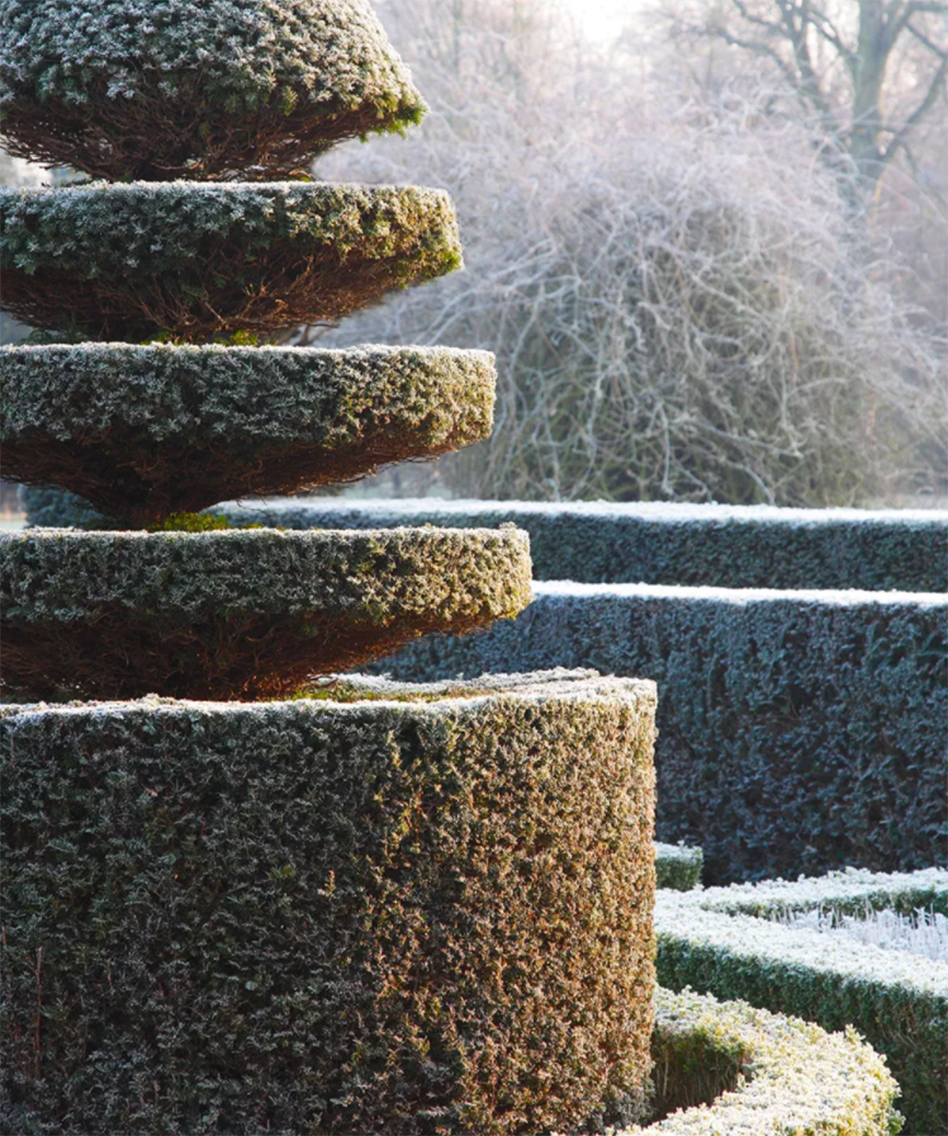
When you're planning a winter garden, evergreen trees and shrubs provide structure and form year-round, allow you to paint with shades of green, offer variegated options, and can be clipped for added punctuation into topiary shapes. Landscaping with evergreens has many benefits.
For statement plants look to architectural choices, such as bamboo, hardy palms, phormiums, yuccas or elegant cloud-pruned Ilex crenata. Repetition of plants gives structure, continuity and a rhythm to your design.
‘The bold planting of evergreens is essential for a winter garden,’ says Guy Watts of Architectural Plants. ‘Evergreens set the foundations for a design. They form the backbone and provide a reliable consistency of texture and architecture, also a practical solution for year-round screening. Vertical drama can be created with topiarised standards or incorporate tropical stalwarts, like cordyline or trachycarpus – tough as old boots and capable of withstanding most winters; when planted in the right situation they provide a certain exotic theatre.’
Hedging that can be neatly trimmed is a favorite for formal gardens – for more relaxed settings, wilder evergreen hedges can also be used for garden screening ideas.
Plan a winter border
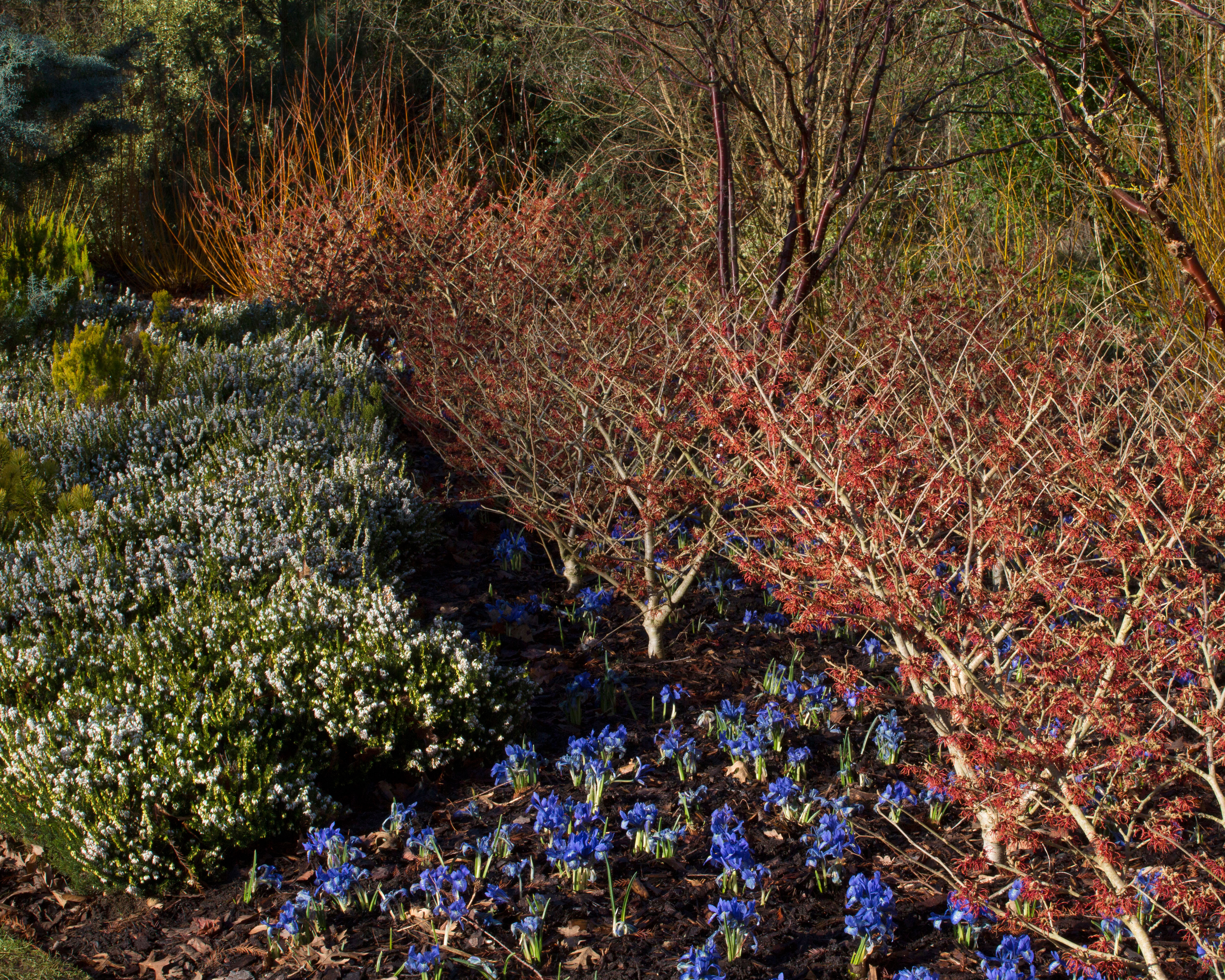
If you're only going to create one really fulsome winter border as part of your flower bed ideas, ensure it's visible from indoors so that you can enjoy the picture that you create.
Planting east to west will let you catch the best of the morning and late afternoon sun in order to light up fiery stems and outline the sculptural shapes of deciduous trees. Vibrant, colorful stems are important elements in any winter scheme. Look out for red, orange, yellow, purple or black stems from cornus and willow varieties, as well as trees with white bark. A good tip is to plant where they catch the low winter sunshine so they can really shine.
Start with evergreens at the back but, in front, put in plants that shed their leaves to reveal fiery stems or branches, such as dogwood.
‘When thinking of a larger area, follow my five C’s guide for getting a great display,’ says Francis Annette, gardens supervisor at Kew’s country garden, Wakehurst.
‘Color is the first thing to consider. You want to cheer up a cold winter’s day and choosing plants that have vibrant colors during the winter months will lift your spirits.
'Next consider how to contrast and complement those vibrant colours. A color wheel is good for this to identify.
'Then consider contours. Avoid having everything the same height. Vary the shapes and use the tiered planting approach: ground cover, find out how to plant bulbs, low shrubs, medium shrubs and small trees.
Finally, for the design, however big or small, to be coherent there must be a strong element of continuity.’
Plant colorful winter garden plants
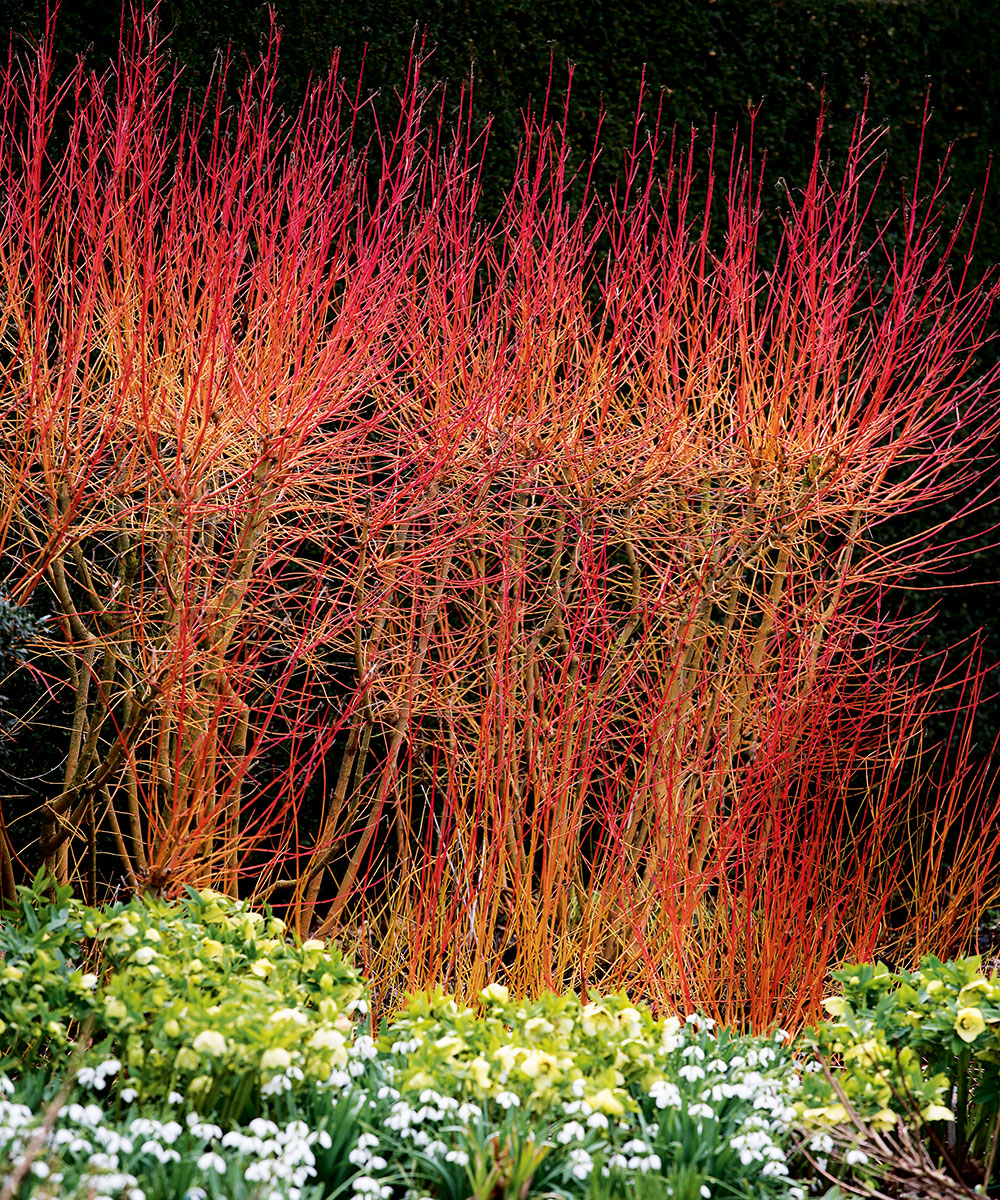
Photography: Acres Wild
'We have beautiful dogwoods, which form dazzling clumps of colorful winter stems, and the elegant Himalayan birches Betula utilis, with their snow-white stems, which create wonderful structure in winter,' says Jonny Norton.
'I also love the ghost bramble Rubus thibetanus, which produces tangles of silvery prickly stems that sparkle when dusted with frost.
'The birches and bramble are happy in a sunny site and reasonably moist soil, while the dogwoods, such as Cornus sanguinea ‘Anny’s Winter Orange’, need damper conditions to thrive – a spot by a natural water feature would suit them best.
As well as bold trees and shrubs, don’t forget the understorey. ‘Evergreen plants and perennials, ferns and ornamental grasses can give great seasonal interest to pots, containers and borders. Heucheras and heucherellas – also ideal for living wall ideas – are a great choice, with hundreds of cultivars now available to choose from. They can be teamed up with other plants, such as Carex oshimensis ‘Evergold’, Festuca glauca ‘Elijah Blue’, Ajuga reptans ‘Burgundy Glow’ and Vinca minor ‘Ralph Shugert’,’ says Simon Sutcliffe of How Green Nursery.
Create swathes of color by planting in multiples

Winter garden planning should include grouped planting for maximum impact – whether this is in hedging, like for the dogwoods above, or for winter flowering plants, such as hellebores, for example.
'It is visually more stunning when there are lots of the same plant rather than having lots of different plants shouting for attention,' advises Francis Annette.
Garden designer Debbie Roberts from Acres Wild recommends, for instance, the strong vertical stems of miscanthus and pennisetum grasses, combined with Perovskia 'Blue Spire' to create a pale, soft and wispy contrast to spent flowerheads.
Ass seasonal scents with winter plants
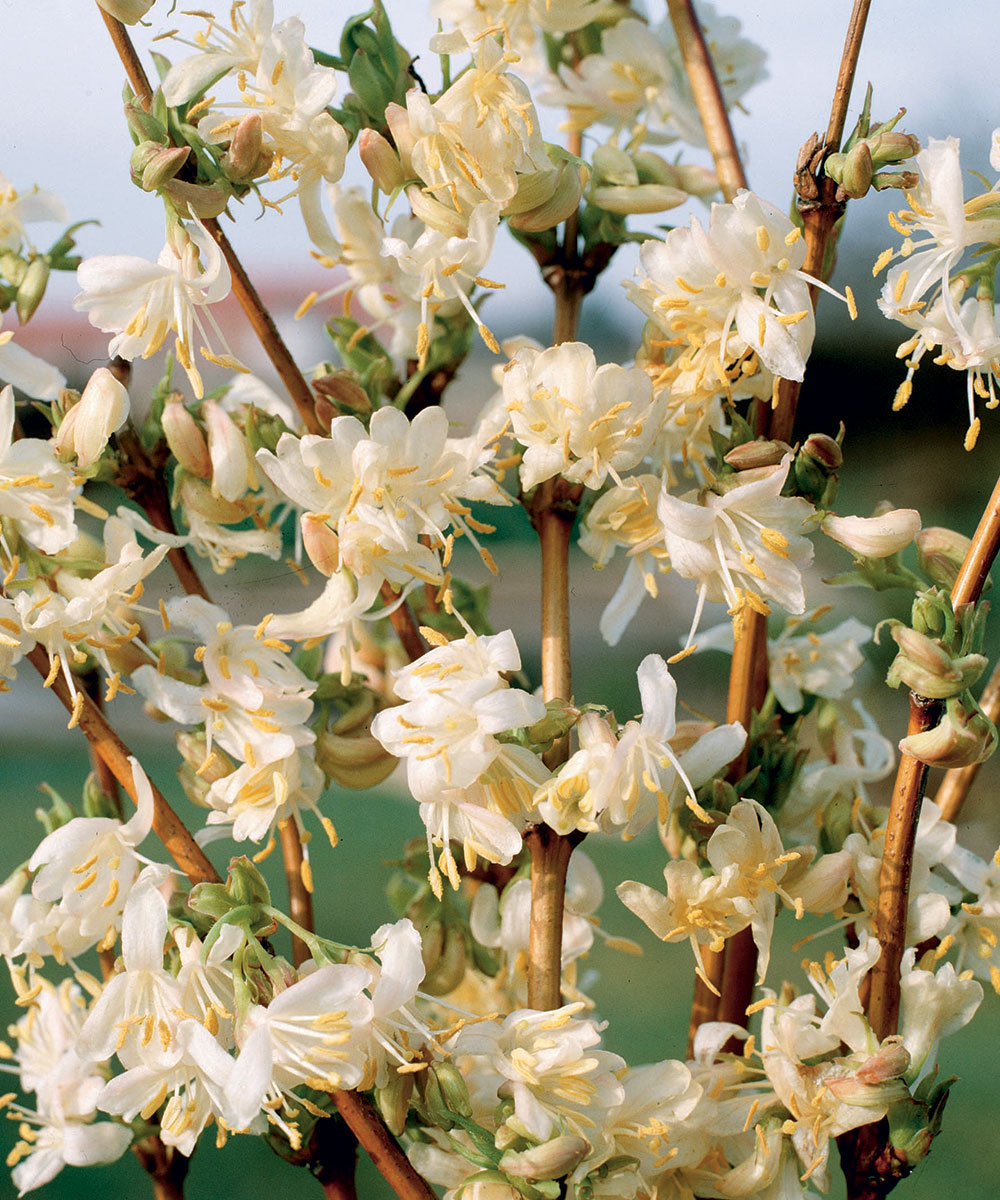
There are many subtle fragrances of winter and fragrant flowers that come to the fore in colder months. While not always the showiest of blooms, their perfume is one of the delights to savor as the chill sets in, so include a selection when planning a winter garden.
From aromatic, spicy and zesty to floral, scented plants are particularly lovely placed beside garden path ideas if you're planting a fragrant garden. Top performers include Daphne bholua with a heady scent; the striking varieties of hamamelis (witch hazels) for both their spidery form backlit by low sunlight and their rich liquorice scent; sweetly scented sarcococca; intoxicating Chimonanthus praecox (wintersweet), and delicate mahonia.
Winter-blooming plants have evolved to produce strong scents to attract the few pollinators that are around in winter. After a long, hot summer, winter scented blooms tend to be larger with a stronger fragrance and as fewer plants flower through winter each is appreciated and distinguished more easily.
'I love the fragrant plants, such as winter honeysuckle Lonicera fragrantissima and the witch hazels, with their delicate spidery flowers and intense perfume. I see visitors literally stopping in their tracks when they get a whiff of them,' says Jonny Norton.
Use ornamental grasses for winter gardens
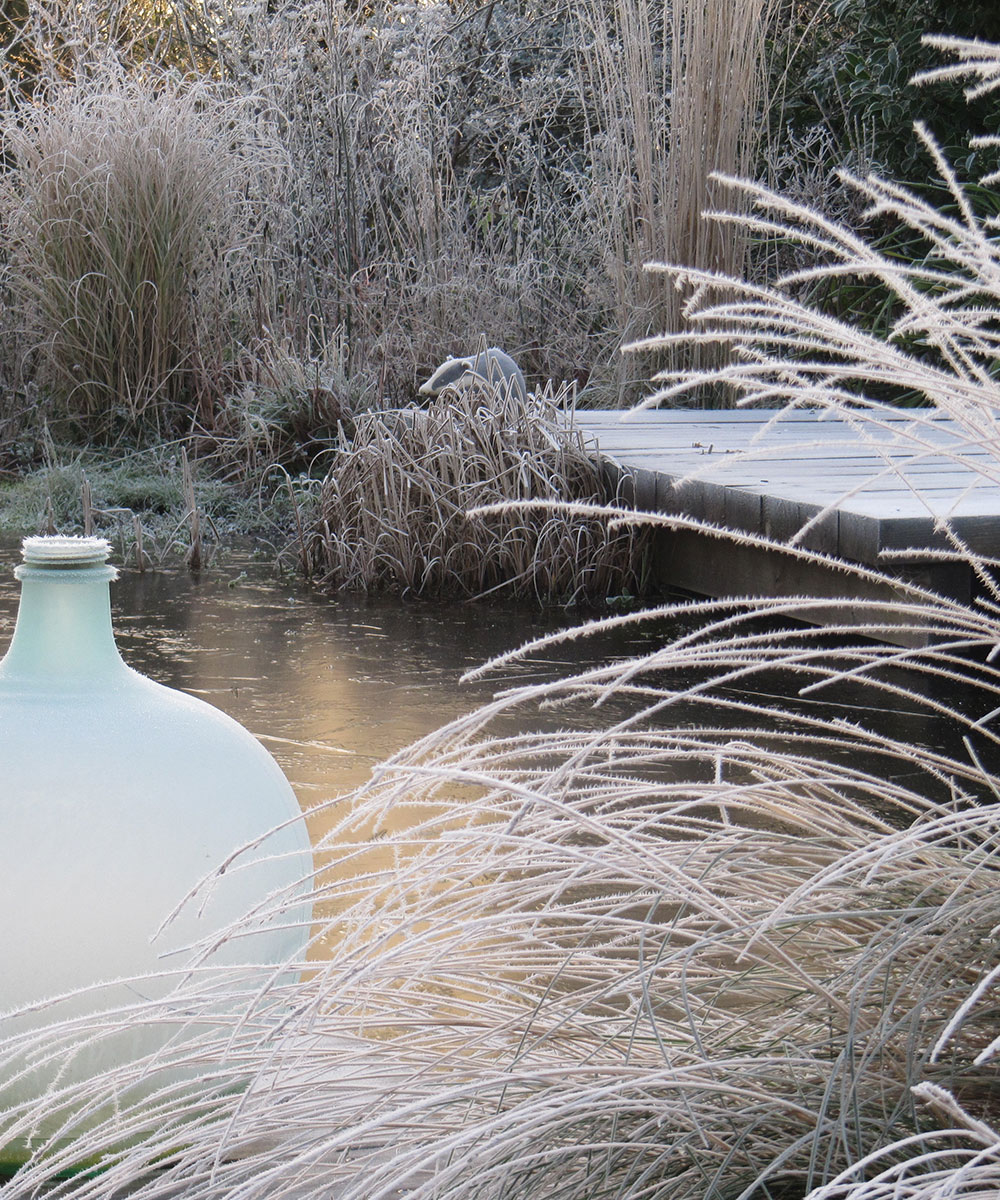
Growing ornamental grasses is a firm favorite in fall gardens but many of them will retain their billowing shape right through the winter to early spring.
'Resist the temptation to cut down the spent foliage,' says Debbie Roberts, who favours the low billowy form of Hackonechloa macra for its russet winter tones that provide a soft orange fringe when lit by the winter sun.
'On sparkling cold days in the depths of winter the best and longest lasting grasses can transform gardens into Narnia, as their fine lines and elegant shapes are coated in hoarfrost,' says garden designer Cheryl Cummings MSGD.
Keep growing your own – even in winter
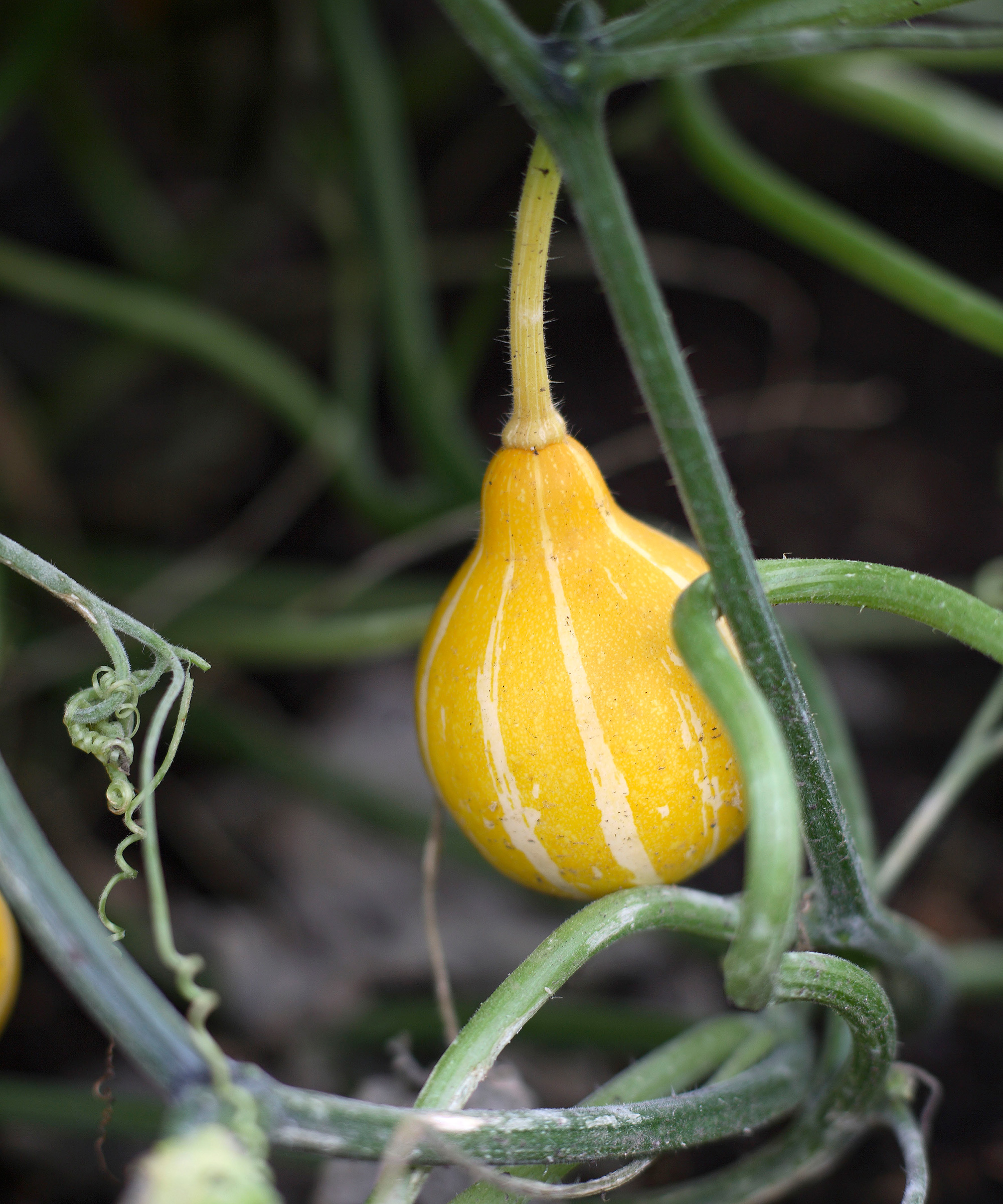
If you are planning a winter garden from scratch, make space for kitchen garden ideas – you can easily choose vegetable garden ideas that can be harvested in early winter. For example, fall-sown fava beans can be harvested earlier than spring sown plants, and the fast-maturing Adelaide carrot will grow at a good pace, so you will still find time to enjoy them.
Growing vegetables in a greenhouse does tend to make them flourish faster, as you can create their perfect environment and temperature. Consider investing in a compost heater to create combustion-free heat.
Plant up winter hanging baskets
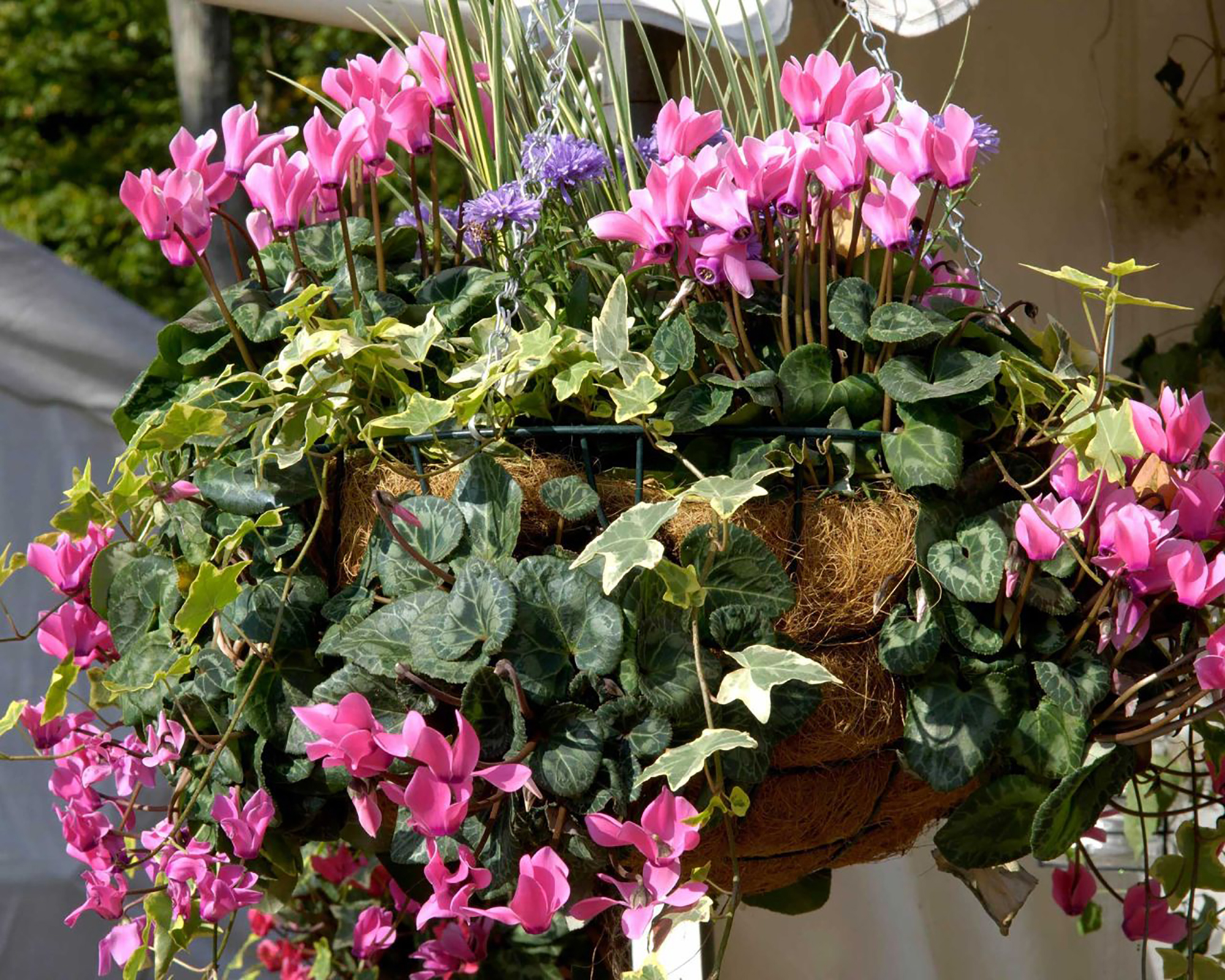
One way to bring color to your plans for a winter garden is to introduce winter hanging basket ideas, planted with flowers or showy shrubs – from cyclamen to heathers – that thrive in winter.
Hang them near to the house and you can enjoy their color, even if the rest of the backyard beyond is somewhat bare.
Position winter containers to create a colorful view
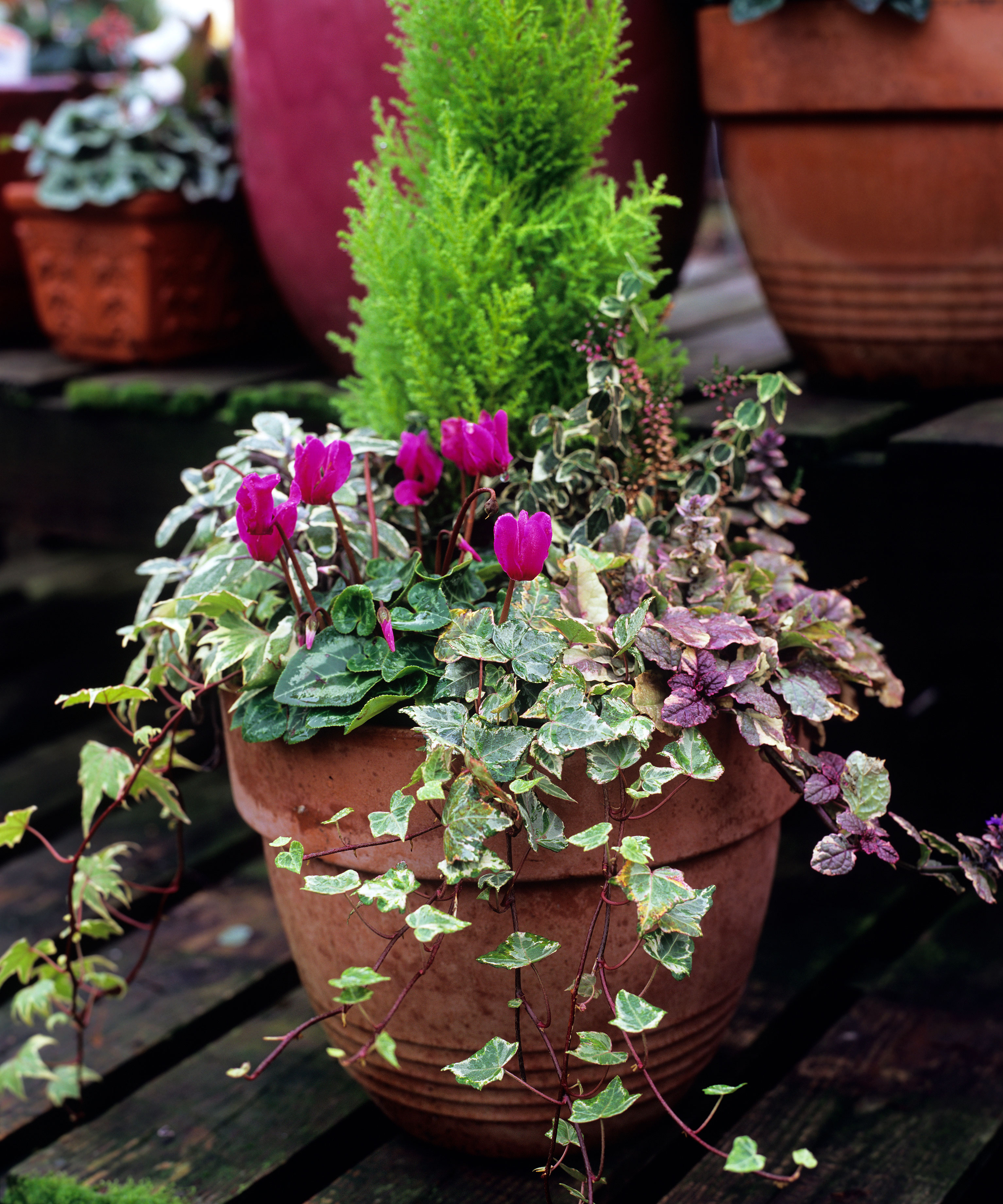
Container gardening ideas are a necessary addition to planning a winter garden, although you will need to edit them throughout the season.
A cheery winter themed pot or groups of containers is an easy way to add color, and some of the planting ideas for fall planter ideas will last through to winter.
Position your containers where you will see and enjoy them the most. Winter pots can be planted for instant impact, in contrast to spring and summer containers where the plants will grow and fill out the space. Select a mix, or focus on a more minimal look. Look at evergreens, grasses, berries and winter flowers, place them on the ground in a group to see how they will look.
A great small garden idea or courtyard garden idea, 'a potted winter display will gladden the heart on a cold winter’s day,’ advises Francis Annette.
‘There are three rules which I follow when planting up a container – thrill, fill and spill,' Annette adds. 'For instance: Daphne bholua in the centre of the pot to “thrill” with lots of wonderful sweet and spicy fragrance – one sniff of a daphne is a good tonic to start the day in winter. To “fill” I would use a combination of Bergenia ‘Overture’ with its cerise colored foliage during winter, coupled with the delightful swaying heads of snowdrops poking through. Finally to “spill”, a variegated ivy completes the look when allowed to spill over the edge of the container.’
Auriculas start to flower from November and can be brought into the house along with forced bulbs. When going out to check on them, you might even be encouraged to pick up the rake, clear a few leaves and – before you know it – you’ve spent a few happy hours in the garden.
Provide shelter and food for wildlife when planning a winter garden
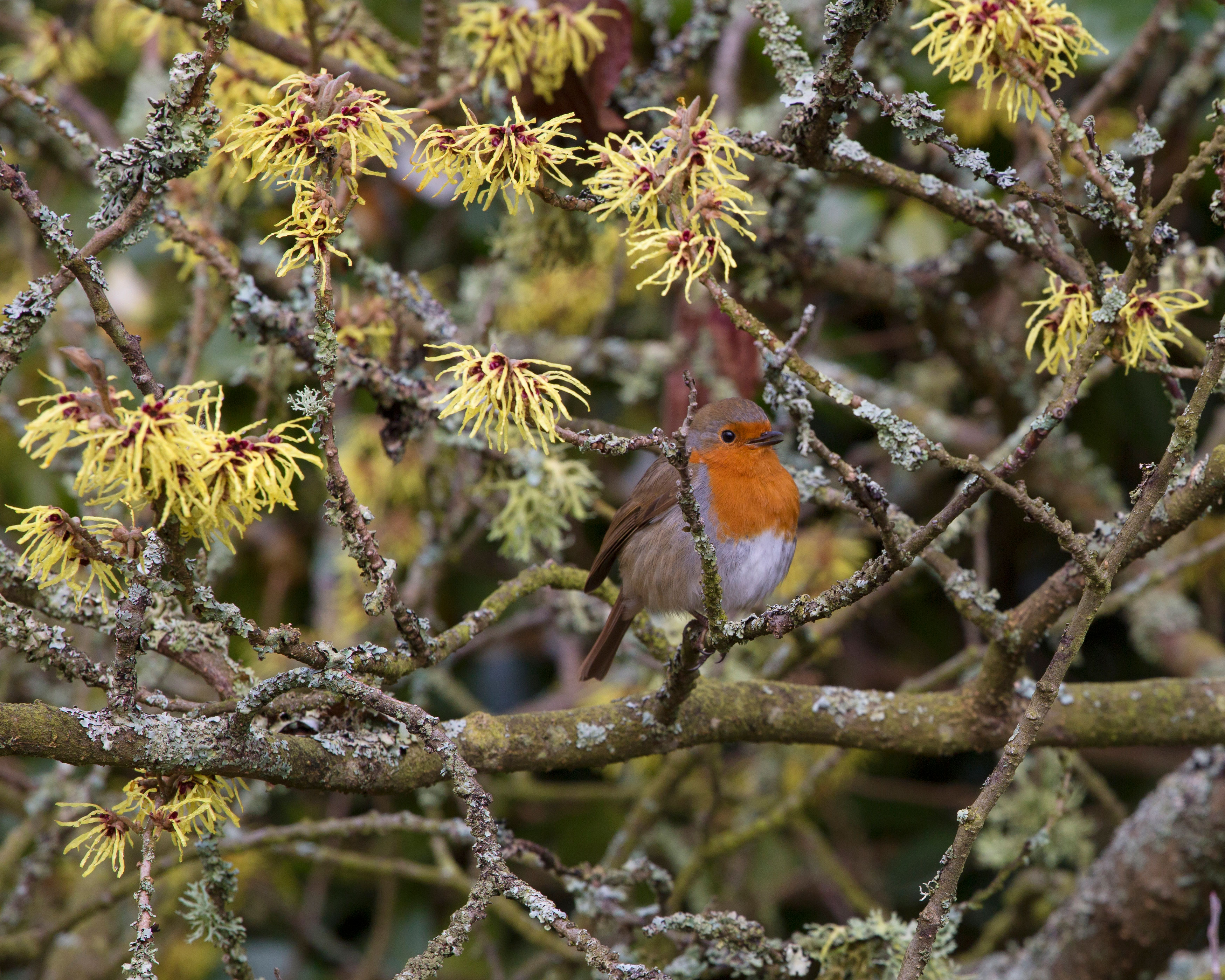
The best wildlife garden ideas will include plants that provide places for birds to shelter in cold weather – whether plants or houses – and food sources for them, such as plants that produce berries that birds love to eat.
Plants that produce berries are very hardy and generally tolerate cool, dark spots in a garden – making them great fillers for summer, too. Think: pyracantha or cotoneaster for beginners.
Let some plants stand through winter in the border not only for structural interest, but also to offer sources of food and shelter, such as the showy seedheads on ornamental grasses and perennials, including papery honesty, blackened rudbeckias, and sculptural star bursts of alliums.
‘Those areas in the garden reserved for a flowering winter display are a great source of nectar for those insects that are encouraged to forage on milder winter days,’ explains Francis Annette, so include some plants for pollinators in your selection.
‘Deeper in the winter display, insects find little niches among the grasses or under the bark of trees and shrubs to hide out the winter. But they need to be well hidden otherwise a hungry robin will make short work of them. Do leave just a few leaves at the back of the border as welcome refuge when those night time temperatures drop,’ Francis adds.
Gardeners are very much encouraged now to allow piles of leaves to gather on borders rather than sweeping them up and disposing of them. They make not only great sheltering spaces for everything from animals to insects, but are wonderful as natural mulches. Plus, they will take the pressure off your compost heap.
Choose trees with eye-catching bark
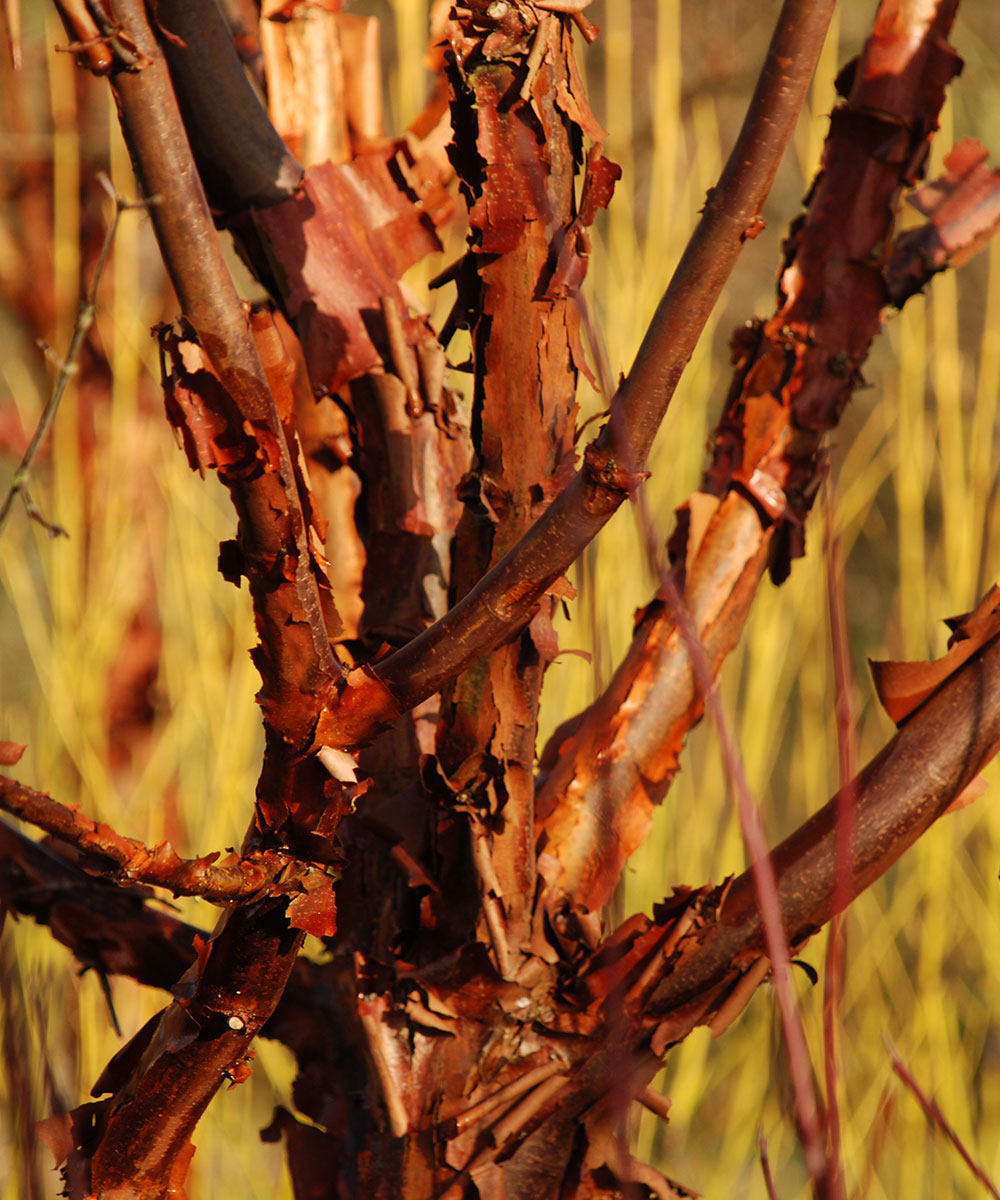
Some of the best trees for small gardens are planted purely for their beautiful bark – and they really come into their own in winter when other foliage has died back. Plus the low winter sun tends to highlight their texture and color more than the overhead sunshine you get in summer.
Trees with red/brown bark, such as Prunus serrula, look wonderful contrasted with trees with white bark, such as silver birches.
Make the most of winter weather

Water butts are a great way to collect rain – a free and eco-friendly resource especially important as a sustainable garden idea. As rainy days become more frequent, it’s the perfect time to invest in a butt. The water can be reused on your garden and house plants, or in your greenhouse. This is much better for plant health, as it is without purification unlike tap water.
If you have any plans for garden pond ideas or water features in your garden, or have bird baths, make sure you can cover these up when temperatures are below zero to avoid them freezing over.
The low winter sunlight can create magical effects in the garden, silhouetting leafless trees and backlighting tall plants and grasses, especially on frosty mornings.
'Positioning plants to make the most of it will add another dimension to the winter garden', says Debbie Roberts, while Cheryl Cummings recommends positioning yard art to add focus and charm whatever the weather.
Make natural decorations from a winter garden
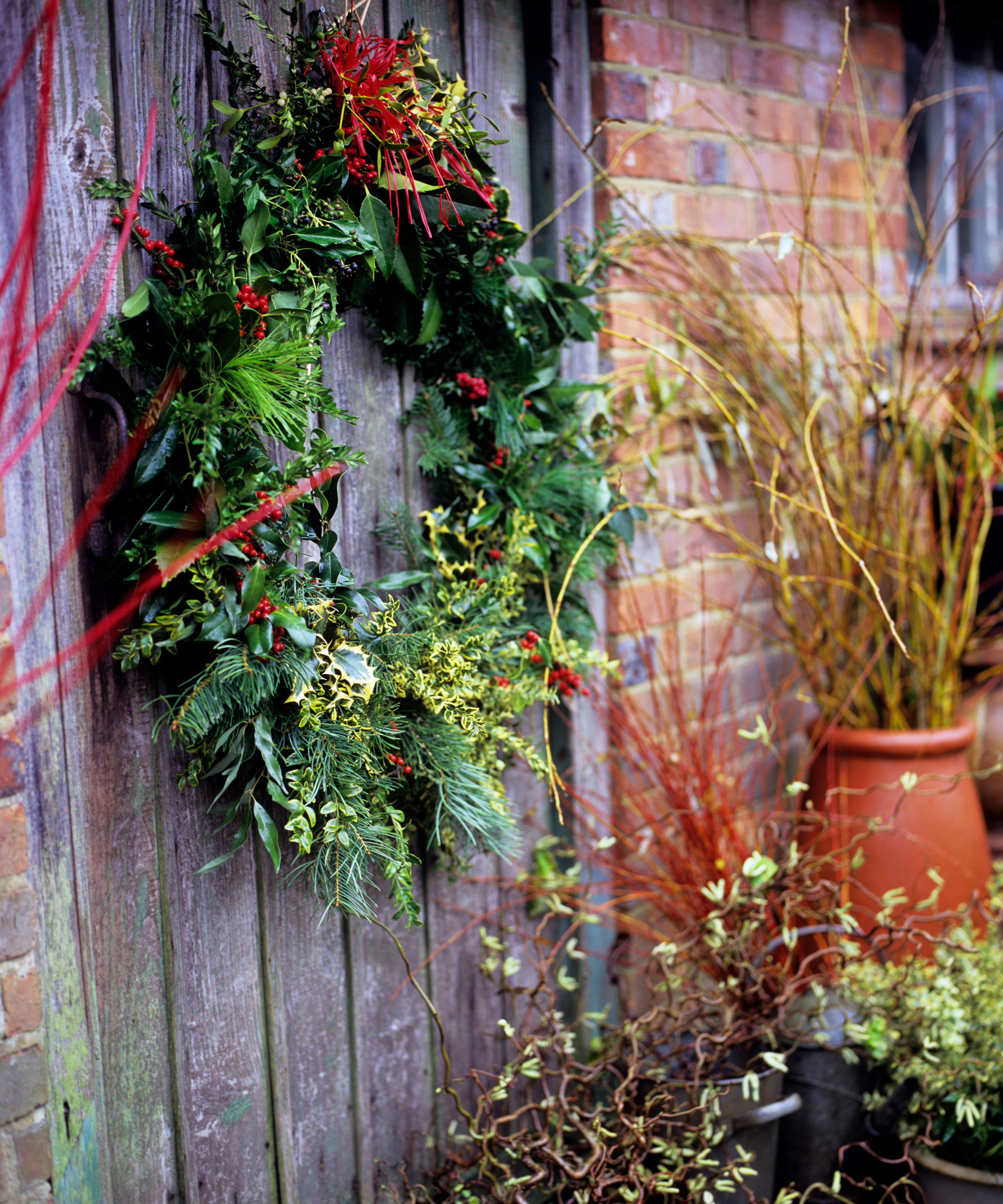
The bare stems revealed in winter offer a range of ornamental opportunities. ‘Bring some dried seedheads inside, along with bright ornamental stems, such as willow and cornus, for decorations including wreaths, or sculpt them in situ as we do at RHS Hyde Hall,’ says Amy Gill from RHS Hyde Hall.
A selection of colorful stems arranged in large vases can make striking seasonal statements, or manipulate the lengths into wreaths or sculptural forms. Whips for living willow structures are planted late November to early March in sunny, moist spots away from the house. The new growth will sprout March to April and you can begin weaving your structure once stems are long and strong enough to manipulate.
What do you put in a winter garden?
Other than what's above, you can also look to plant fruit and vegetables for a kitchen garden that will keep on giving throughout winter.
Think: potatoes, garlic, leeks, onions, radishes, then greens such as chard, spinach, kale and bok choi. There's rhubarb, too, for fruit-lovers.
How do I improve my garden soil?
There are ways to improve your garden soil. Although soil and its lifeforms hibernate in winter, you can improve soil health.
Here’s a dual purpose way to enrich your soil, while also protecting plants through winter by stabilizing the temperature: mulch around trees, shrubs and herbaceous plants, which will encourage rich growth when plants awake from their dormant phase. Apply just after the first hard frost – materials include leaves, wood chips, straw or bark.
What veg can I grow in winter?
Robust crops such as growing brussels sprouts, beetroot, parsnips, broccoli, cabbage, leek, kale, red cabbage, carrots, chard, Asian greens and winter salads, offer fresh produce through winter.
Vegetables actually become sweeter and more delicious after a frost, as they produce extra sugars when reacting to the cold. You can also use a cold frame or cloches for added protection.
Indoors, why not try sowing some herbs and micro-greens to add flavor to dishes throughout winter. Crops to sow for spring include broad beans, peas, onions and garlic sets.
Sign up to the Homes & Gardens newsletter
Design expertise in your inbox – from inspiring decorating ideas and beautiful celebrity homes to practical gardening advice and shopping round-ups.

Lucy Searle has written about interiors, property and gardens since 1990, working her way around the interiors departments of women's magazines before switching to interiors-only titles in the mid-nineties. She was Associate Editor on Ideal Home, and Launch Editor of 4Homes magazine, before moving into digital in 2007, launching Channel 4's flagship website, Channel4.com/4homes. In 2018, Lucy took on the role of Global Editor in Chief for Realhomes.com, taking the site from a small magazine add-on to a global success. She was asked to repeat that success at Homes & Gardens, where she has also taken on the editorship of the magazine.
- Leigh ClappContributing Editor
-
 6 items you should always unplug before leaving the house – banish 'phantom power' usage
6 items you should always unplug before leaving the house – banish 'phantom power' usageDon't let these mistakes cost you a small fortune
By Sophie Warren-Smith Published
-
 How to fertilize magnolias – garden experts reveal the secrets to better blooming, and timing is critical
How to fertilize magnolias – garden experts reveal the secrets to better blooming, and timing is criticalMagnolias are famed for their spring flowers, and feeding at the right time can give trees a boost
By Thomas Rutter Published